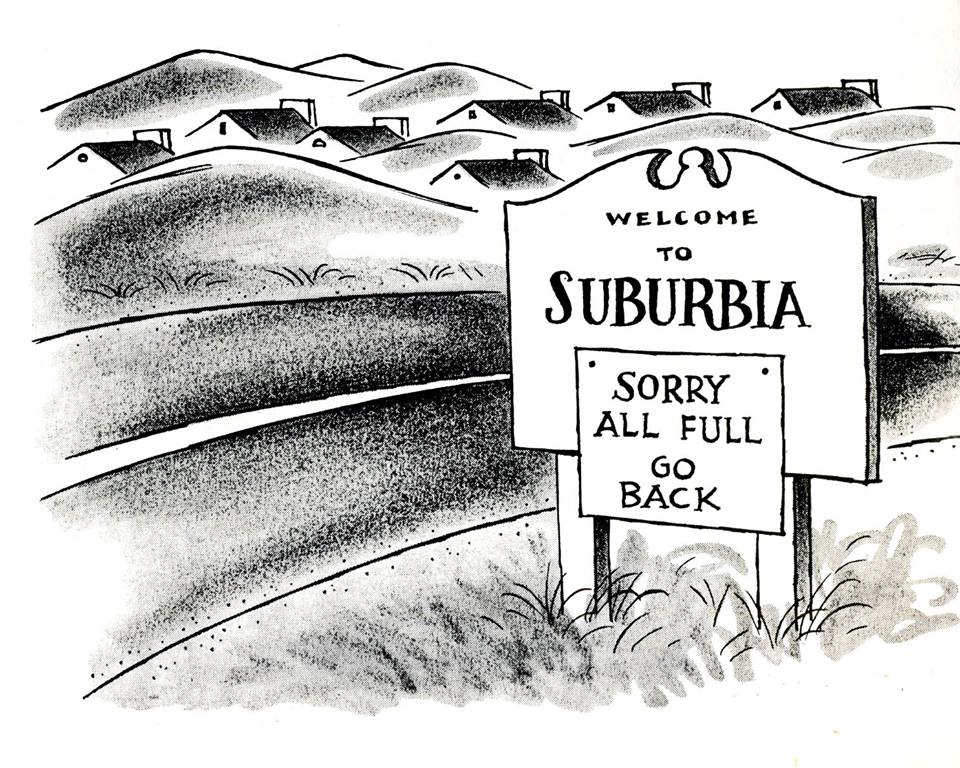When it comes to development in our region, is public perception the key to success?
That’s the proposition that Jaci Clement, CEO and executive director of the Fair Media Council, a nonprofit watchdog group, put forth in a recent op-ed she wrote for Long Island Business News entitled “Developers Need to Become Media Savvy.”
Alas, Clement is way off the mark about the communication needs of Long Island’s development community. Instead of focusing on the best ways to apply PR spin to projects that are the developmental equivalent of shoving five pounds of bologna into a two-pound tin, these builders should be more transparent about their projects, and be more open to addressing valid community concerns when zoning variances are requested.
Development efforts on Long Island are not “battles to be won” through strategic communication and slick PR spin as Clement suggests. Rather, proposals for growth should be grounded in thoughtful analysis, the measured needs of area residents, and be seen as part of a larger comprehensive vision that anticipates present and future trends here.
All too often, LI’s eager developers see zoning as more of an annoying suggestion instead of the rule. With that mindset, they tend to bring residents on board too late in the process—an approach that runs counter to sound urban planning practice, which encourages public participation. As a result of this limited input concerning the future of their neighborhood, residents become distrustful of builders. In turn, regardless of their best intentions and promises of capital investment, builders face a hostile community.
This is a problem that PR alone can’t overcome.
On the other hand, project transparency and community participation can help get the shovels in the ground.
But let’s give Clement some credit. The development process would benefit from more communication, but not in the manner she suggests. Municipalities are the entities that must better communicate to their residents. When it comes to hashing out a comprehensive approach to land use, local governments in the region must readily and honestly communicate the justification of preserving existing zoning in an approachable manner and be open to the concerns of their constituents, as well as be transparent about the developer’s rationale when a change-of-zone is being sought.
Further, as we’ve seen all too often, Long Islanders don’t always help their cause. Developers who do try to reach out to residents are often stonewalled by civic groups who prefer no change whatsoever. This collective NIMBYism can go far beyond reasonable concerns about traffic and quality of life. For example, in Bay Shore when residents protested a proposal to build a new gas station on the site of a shuttered one, they diminished their credibility. By focusing on as-of-right proposals or those requiring slight variances, these protests take away from the collective effectiveness of civic groups when large projects like Gerry Wolkoff’s Heartland loom over the horizon. Clement’s PR strategy wouldn’t help mitigate the reality that in these cases, it often is in the interest of the developer not to be forthcoming—an unfortunate scenario.
But let’s be honest. Long Islanders are too smart to fall for marketing efforts funded by development dollars. Instead of suggesting developers do more PR spin, good advice to the development community would be to engage residents early and often, and truly listen to their concerns long before the project is on the drawing board. This approach runs counter to the colorful claim by the Island’s big developer Ed Blumenfeld that residents hold development efforts “hostage,” as he described it in a recent op-ed in the Long Island Business News.
On the contrary, residents don’t hold projects hostage when they helped create them. All one has to do is compare the fate of the Taubman’s Mall project slated for the former Cerro Wire property in Syosset and the newly proposed Syosset Park at the same site to see how both scenarios played out, with and without local resident input. Another example is the relative success of Renaissance Downtown’s consensus-building in their revitalization proposal for Huntington Station.
LI’s future will not be determined by an advertising campaign. The consequences of poor development choices are costly to correct. When left unaccounted for, the impacts of unmanaged growth can be irreversible, as showcased by the harmful algal blooms that infect our Island’s surface waters and the slow-yet-steady deterioration of our aquifer thanks to infrastructure that failed to keep pace with growth.
Learning how to spin better shouldn’t be the priority for Long Island’s development community. Their priority should be fostering public participation and coming up with quality plans that are more responsive to our community’s needs.
Rich Murdocco writes about Long Island’s land use and real estate development issues. He received his Master’s in Public Policy at Stony Brook University, where he studied regional planning under Dr. Lee Koppelman, Long Island’s veteran master planner. Murdocco is a regular contributor to the Long Island Press. More of his views can be found on www.TheFoggiestIdea.org or follow him on Twitter @TheFoggiestIdea.


































